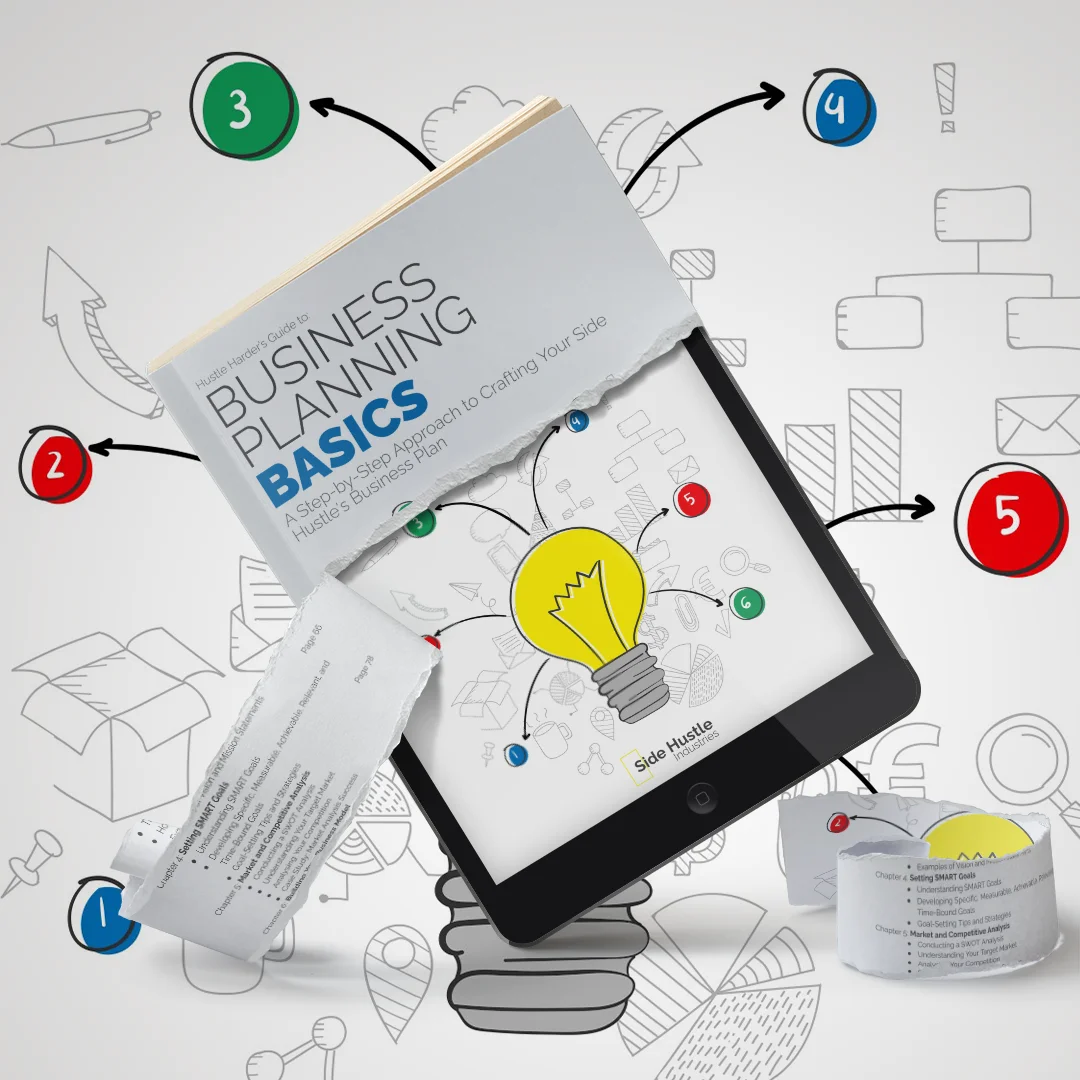
Financial projections are the numerical representation of your business’s future financial performance. They are a crucial component of your business plan and provide a roadmap for your financial success. Today, we’ll explore the essential steps to create effective financial projections for your side hustle or startup.
Why Financial Projections Matter
Financial projections serve several critical purposes:
- Planning: They help you set clear financial goals and a strategic path to achieve them.
- Funding: Investors and lenders often require financial projections to assess the viability of your business and make investment decisions.
- Management: Financial projections enable you to monitor your business’s financial health and make informed decisions about resource allocation and growth strategies.
- Benchmarking: You can use your projections to compare your actual financial performance with your initial expectations, allowing for course correction when necessary.
- Communication: Financial projections are a valuable tool for conveying your business’s potential to stakeholders, partners, and employees.
Now, let’s dive into the steps for creating your financial projections.
Step 1: Gather Financial Data
Start by collecting all relevant financial data that you’ll need for your projections. This data includes historical financial statements, such as income statements, balance sheets, and cash flow statements, if applicable. Additionally, gather information on your startup costs, initial investments, and any existing financial commitments.

Step 2: Revenue Projections
Sales Forecast
Your sales forecast is a fundamental component of your financial projections. It estimates the revenue you expect to generate over a specific period, typically one year. To create an accurate sales forecast:
- Begin by identifying your target market and estimating the number of customers you expect to reach.
- Calculate your average transaction value or the price at which you’ll sell your products or services.
- Multiply the number of customers by the average transaction value to estimate your total sales.
Pricing Strategy
Your pricing strategy plays a vital role in your revenue projections. Consider how pricing affects your sales volume and profit margins. Determine whether you’ll employ strategies like volume discounts, bundling, or tiered pricing to maximise revenue.
Sales Channels
Specify your sales channels, whether they’re online, in physical stores, through distributors, or a combination. Evaluate the potential revenue from each channel and the associated costs.
Seasonality
Account for seasonality if your business experiences fluctuations in sales throughout the year. Adjust your sales forecast to reflect peak and off-peak periods.
Sales Growth
Estimate your sales growth over time. Will your sales remain consistent, or do you expect exponential growth? Base this estimate on market research, historical data, and your marketing and sales strategies.
Step 3: Expense Projections
Creating an accurate expense projection is vital for determining your business’s profitability and sustainability. Consider the following expenses:
Cost of Goods Sold (COGS)
Calculate the direct costs associated with producing your products or delivering your services. This includes materials, labour, and overhead expenses. COGS is a variable cost that should align with your sales forecast.
Operating Expenses
Identify and project your fixed and variable operating expenses. Fixed expenses, such as rent and salaries, remain relatively constant. Variable expenses, like marketing and utilities, fluctuate with business activity.
Startup Costs
If you’re launching a new venture, include one-time startup costs, such as legal fees, equipment purchases, and initial marketing expenses.
Contingency Fund
Allocate a portion of your budget to a contingency fund to cover unexpected expenses or economic downturns.
Research and Development (R&D)
If your business involves product development or innovation, account for R&D expenses.
Debt Service
Include any loan payments, interest, or other debt-related expenses if applicable.
Step 4: Cash Flow Projections
Cash flow projections track the inflow and outflow of cash in your business. Maintaining positive cash flow is crucial for ensuring your business’s financial stability. To create cash flow projections:
- Start with your opening cash balance at the beginning of the period.
- Add the cash inflow from sales, loans, investments, or any other sources.
- Deduct cash outflows, including expenses, loan repayments, and taxes.
- Calculate the closing cash balance at the end of the period.
Cash flow projections will help you identify periods when your business might experience cash shortages, allowing you to take preemptive measures.
Step 5: Financial Statements
The final step in creating financial projections involves generating financial statements:
Income Statement (Profit and Loss Statement)
Your income statement provides a summary of your revenues and expenses, resulting in your net profit or loss. It helps you assess your business’s profitability over time.
Balance Sheet
The balance sheet shows your business’s financial position at a specific point in time. It includes assets (what you own), liabilities (what you owe), and equity (the owner’s stake). The balance sheet provides a snapshot of your business’s financial health.
Cash Flow Statement
Your cash flow statement details the movement of cash in and out of your business over a period. It is essential for managing your business’s liquidity and understanding your cash flow patterns.
Step 6: Sensitivity Analysis
A sensitivity analysis involves testing your financial projections against various scenarios to understand how changes in key variables impact your business. Consider scenarios like increased or decreased sales, shifts in pricing, or changes in operating expenses. This analysis helps you assess your business’s resilience to different market conditions.
Step 7: Review and Refine
Regularly review and refine your financial projections. As your business evolves, update your assumptions, refine your revenue and expense estimates, and adapt to changing market conditions. This ongoing process ensures that your financial projections remain relevant and accurate.

Financial Projection Tools
Creating financial projections can be complex, but various tools and software can simplify the process. Popular options include Microsoft Excel, Google Sheets, QuickBooks, and specialised financial modelling software like LivePlan or ProjectionHub. These tools offer templates, formulas, and automated calculations to assist you in creating your projections.
Seek Professional Advice
If you find the process of creating financial projections challenging, don’t hesitate to seek professional advice. A certified accountant or financial advisor can provide guidance, ensure accuracy, and help you refine your financial projections.
Final Thoughts
Creating financial projections is a crucial step in your business planning process. Accurate and well-thought-out projections will not only assist you in securing financing but also serve as a roadmap for your business’s financial health and growth. Regularly update and review your financial projections to stay on track and adapt to changes in your business environment. Remember that financial projections are a valuable management tool that will help you make informed decisions and steer your side hustle or startup toward financial success.

*Also available on Amazon in Kindle, Soft Cover & Hard Cover formats. —> Click Here.
